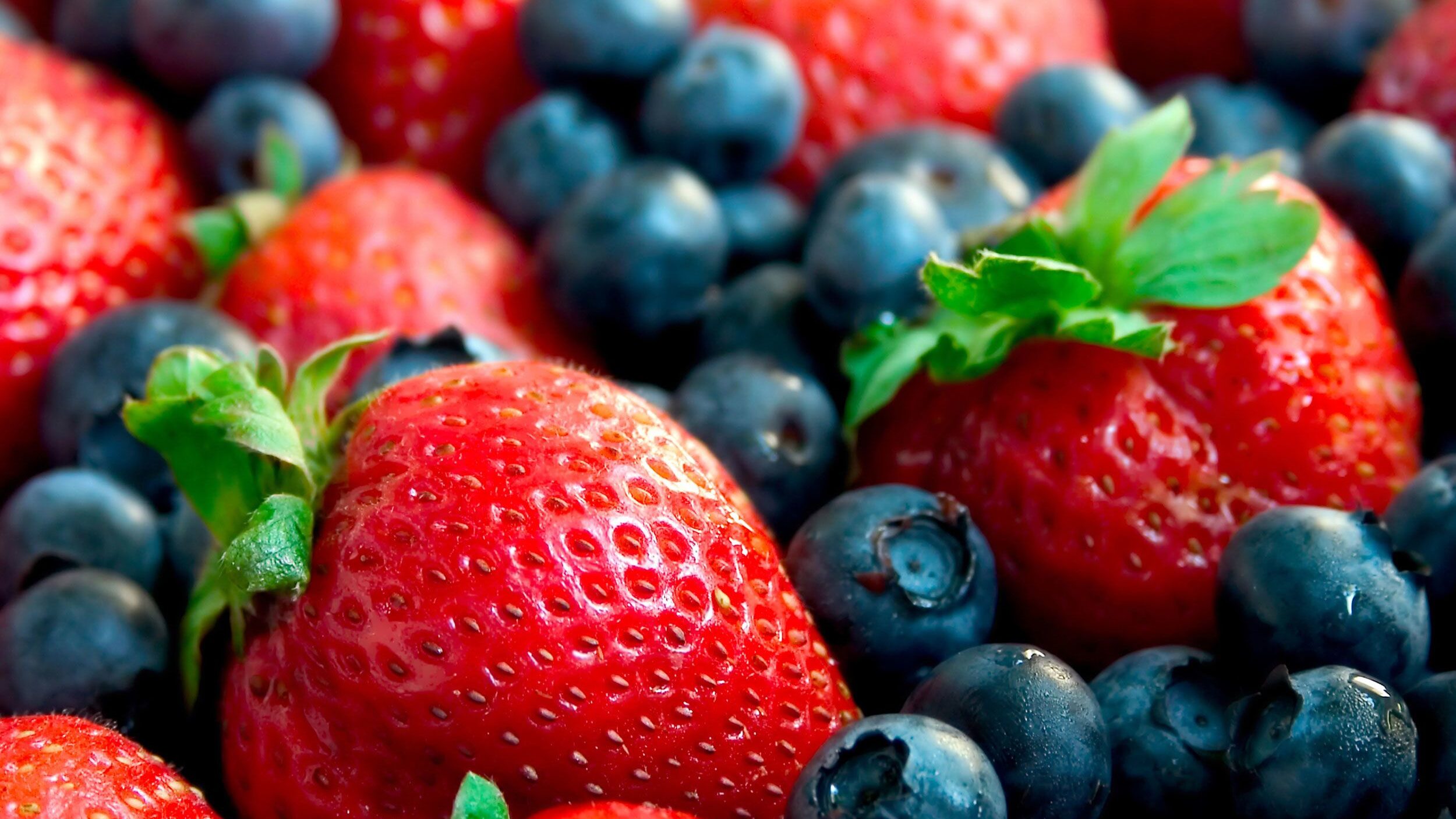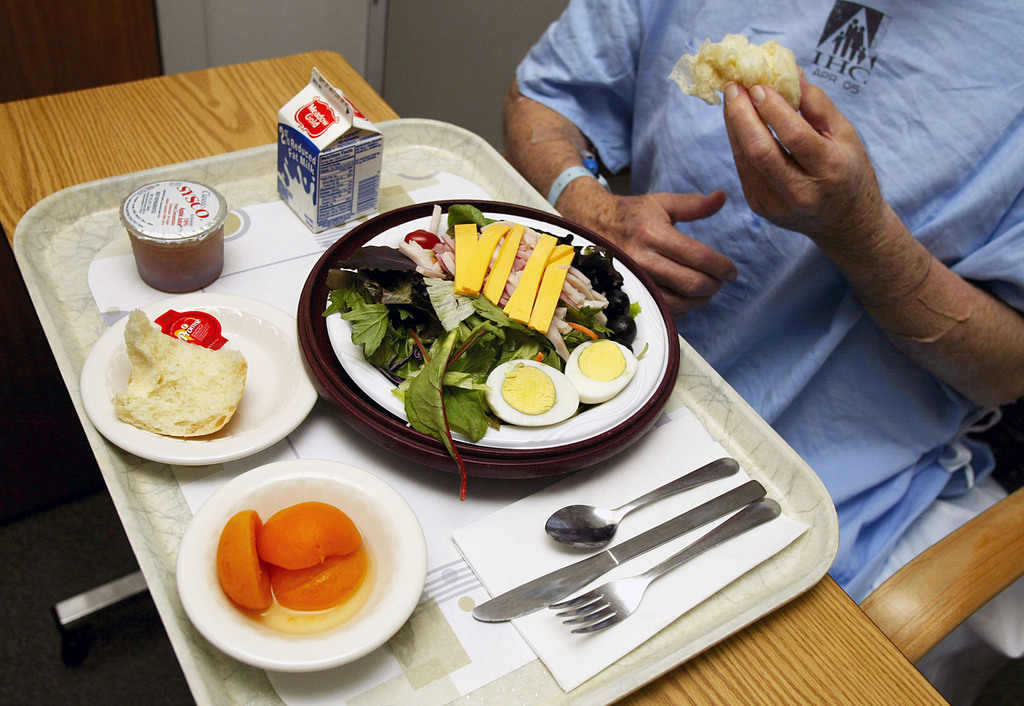Blueberries, strawberries again on the ‘Dirty Dozen’ list
Mar 21, 2024, 9:36 AM | Updated: 11:13 am

Some farmers feel the term "Dirty Dozen" is insulting, according to the Alliance on Food and Farming. (Mandatory Credit: kcline/iStockphoto/Getty Images via CNN Newsource)
(Mandatory Credit: kcline/iStockphoto/Getty Images via CNN Newsource)
(CNN) — The dirty dozen list is comprised of foods tested by the United States government and found to have detectable levels of pesticides. The 2024 Shopper’s Guide to Pesticides in Produce shows that about 95% of tested nonorganic strawberries, leafy greens such as spinach and kale, collard and mustard greens, grapes, peaches and pears contained these pesticides.
Nectarines, apples, bell and hot peppers, cherries, blueberries and green beans rounded out the list of the 12 most contaminated samples of produce. It’s dubbed the “Dirty Dozen” by the Environmental Working Group, or EWG, an environmental and health advocacy organization that has produced the annual report since 2004.
Pesticides have been linked in studies to preterm births, congenital malformations such as neural tube defects, spontaneous abortions and an increase in genetic damage in humans. Exposure to pesticides has also been associated with lower sperm concentrations, heart disease, cancer and other disorders.
Farmworkers who use or are exposed to pesticides are at highest risk, according to studies. A 2022 meta-analysis found workers exposed to pesticides were nearly five times as likely to have DNA damage while a February study found children exposed at an early age showed poorer neurodevelopment from infancy to adolescence.
It’s not all bad news. Avocados, sweet corn, pineapples, onions and papayas led the “Clean Fifteen” list of conventionally grown produce with the least amount of trace pesticides — nearly 65% of the fruits and veggies in that grouping had no detectable pesticide residues, according to the report released Wednesday.
Rounding out the “Clean Fifteen” were frozen sweet peas, asparagus, honeydew melons, kiwis, cabbage, watermelons, mushrooms, mangoes, sweet potatoes and carrots.
Washed, peeled and scrubbed
Each year, a rotating list of domestic and imported produce is tested by US Department of Agriculture and US Food and Drug Administration. Staffers at the USDA Pesticide Data Program wash, peel and scrub fruits and vegetables as consumers would, while workers at the FDA only brush dirt off the produce. Then the fruits and vegetables are tested for more than 250 different pesticides and the results are posted online.
For 2024, EWG researchers examined testing data on 47,510 samples of 46 nonorganic fruits and vegetables, with the majority of testing from the USDA. An analysis of that data found traces of 254 pesticides in all fruits and vegetables analyzed, with 209 of those chemicals on produce in the “Dirty Dozen” list.
“We find that what ends up on one list versus the other reflects how those fruits and vegetables are grown,” said Alexis Temkin, EWG’s senior toxicologist. “Avocados, for example, aren’t pesticide intensive, while strawberries grow very close to the ground and have a lot of pests.”
Report is unfair to farmers, critics say
About 70% of nonorganic produce tested by the USDA and FDA have pesticide levels within the legal limits allowed by the US Environmental Protection Agency, according to the EWG report. That fact makes the report misleading, said Carl Winter, emeritus professor of cooperative extension at the University of California, Davis.
“The dose makes the poison, not its presence or its absence, and that dose determines the potential for harm. In many cases you’d have to be exposed to a million times more than what we’re exposed to before you’d even see any effects,” said Winter, speaking on behalf of the Alliance on Food and Farming, which represents organic and conventional farmers.
However, “legal levels do not mean safe levels,” Temkin said in response. She pointed to times when regulators allowed potentially dangerous chemicals, such as the pesticide DCPA, to remain on the market long after scientific research had raised concerns. The herbicide was linked to thyroid concerns for years before the EPA told the public the chemical posed “significant risks to human health” in 2023.
Another example: chlorpyrifos, a pesticide linked to brain damage in children and fetuses. The American Academy of Pediatrics joined EWG in 2017 protesting the EPA’s continued approval of the chemical.
In addition, pesticides banned by the government continue to show up on crops sold in the US, according to the EWG report.
“Green beans for example, continue to show traces of acephate, a toxic pesticide the EPA banned for use on green beans more than 10 years ago,” Temkin said. “A lot of pesticides found on the ‘Dirty Dozen’ have also been banned in the European Union because of their harmful effects on human health.”
Another concern from critics is that the “Dirty Dozen” list is insulting to multigenerational farmers who struggle to grow food for the nation and feed those same products to their own children, said Steve Clement, CEO of Pacific Northwest Tree Fruit
“When this report comes out it’s like getting stabbed a little bit because we’re working so hard to put out a nice healthy product, and the implication of the ‘Dirty Dozen’ list is that it is unhealthy,” Clement said. “It’s like doing something kind for somebody and then having them turn around and call you some sort of monster.”
The report may scare people away from eating the fruits and vegetables they need, said Neil Nagata, whose family has grown organic and conventional strawberries in Oceanside, California, for decades.
“Every time the report comes out, or there’s a scare on imported strawberries, we see our sales drop off,” Nagata said. “It’s not as if we’re doing something that is wrong or incorrect, we’re actually producing very healthy, safe food. In fact, we actually live in the strawberry field and my father is 100 and my mom is 97, and they still eat strawberries.”
It is important that people eat lots of fruits and vegetables, even conventionally grown, said EWG’s Temkin.
“We always emphasize that,” she said. “We want to enable consumers who wish to avoid as many pesticides as possible by opting for organic versions of the ‘Dirty Dozen,’ where pesticide levels will be lower, and then, if they wish, choose less expensive conventionally grown produce from the ‘Clean Fifteen.’”
Organic produce is not more nutritious, but studies have found that levels of pesticides in the urine of adults and children can drop up to 95% after a switch to an organic diet.
Fungicide levels were high
For the first time, EWG analysts looked at reported levels of fungicides, one form of pesticide used to kill fungal diseases such as powdery mildew.
“Four out of five of the most frequently found pesticides on the ‘Dirty Dozen’ list were fungicides, and they were also found in particularly high concentrations,” Temkin said.
Two fungicides — fludioxonil and pyrimethanil — had the highest concentration on the “Dirty Dozen” list of any other pesticide, according to the report. Fludioxonil was found on 90% of peaches and nearly 30% of all “Dirty Dozen” samples, according to the report. Pyrimethanil was found on 65% of pear, 30% of apple, 27% of grape, 26% of strawberry and 24% of nectarine samples.
“Fungicides are often applied after harvest to keep produce mold-free on its way to market. That’s likely why the concentrations were so high on some samples – higher than other pesticides applied earlier in the growing season,” Temkin said. “The application of the fungicide is also closer to the time the produce is put on store shelves and consumers are eating them.”
Fludioxonil creates a waxy coating on the fruit or vegetable that studies find is difficult to wash away. While the EPA finds fludioxonil safe at regulated levels, some studies have raised concerns that it might disrupt hormone and neurological systems. Exposing breast cancer cells to fludioxonil in a petri dish found the fungicide increased cell production by 1.5%.
Pyrimethanil was classified as a “possible human carcinogen” by the EPA in 2004, but the agency determined in 2015 the chemical was “not likely to be carcinogenic to humans” at low doses. Studies have shown it to be toxic to tree frogs and aquatic life, and it may disrupt thyroid levels in pregnant women living in agricultural areas. In lab tests, pyrimethanil and fludioxonil were show to impact androgen activity — hormones that contribute to growth and reproduction in both men and women.
Ways to reduce pesticides in your food
Cleaning fruits and vegetables before eating does reduce pesticide levels, but “no washing method is 100% effective for removing all pesticide residues,” according to the National Pesticide Information Center.
Starting with clean hands, wash and rub produce under running water instead of soaking to remove the most pesticide, the center recommends on its website.
Don’t use soap, detergent or a commercial soak or scrub, however, as they have not been proven to be any more effective, according to the FDA. Dry the produce with a clean cloth or paper towel to further reduce bacteria that may be present.













